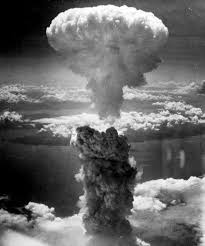World Top 20 Project’s Education Rankings: Breaks Down 2020
In a year where the world changed, a new country climbed atop the education landscape. While in the classroom, where the action counts. Getting students into them was the biggest challenge in 2020.
Countries that lack the 21st century technology infrastructure were doomed at the start. In continents like Africa, where 80 percent of the children had no access to the Internet, to 69% in Asia, face the cold reality they are second-class citizens.
The World Top 20 Project lives in reality and accepts one-fifth of children have no access to schools. Not happy about the situation, the project knows four is larger than one. So, finding a solution to improve the quality of the lives of all children that do have, has brought new concerns.
As usual, the World Top 20 Projects annual Education Rankings list over 200 nations’ strengths and weaknesses, and shows how it affects the economic and social conditions of countries.
What makes the Education Rankings unique is the goal. That goal has brought a challenge to every nation to achieve five educational goals by 2030.
From Early childhood enrollment rates for 3 to 5-year-old. To oversee children 6 to 11 complete Primary education. To achieve the United Nations Sustainable Development Goals 4 missions for 12 to 14-year-old children to attend and complete lower secondary education levels.
The Project rankings also focus on fifteen to eighteen-year girls and boys completing twelve years of schooling to help to prepare them for early adulthood. With the advanced, level of higher education in achieving a College Graduation degree at the top level of education.
Our mission is to bring order and support to every child, no manner where they live.
Below you will find more information about the World Top 20 Project 2020 Education Rankings.
Database Tiers Process
Tiers breaks down the countries in the World Top 20 Project educational database rankings. The rankings are used to support the United Nations Sustainable Development Goals (SDG) 2030 Initiative.
The focus is to help nations achieve the SDG 4 education mission – to ensure inclusive and equitable quality education and promote lifelong learning opportunities for all.
SDG 4 has ten target areas and 11 indicators to measure its success. To help keep this simple, the World Top 20 Project sets five educational goals for each nation to reach by 2030, which will help them capture all ten targets and match all 11 indicators.
Tier 1: Focus on the top 20 nation’s progress and digression in improving education in their country. It also looks at how this is affecting their economic growth and impacts their social conditions.
The Top 20 Countries Ranked in 2020 are:
1. Denmark– Last Year Rank: 3 – Becomes the second country ranked number one in the World Top 20 Project international database. Denmark captures this year’s spot by being one of the most progressive countries attacking the COVID 19 pandemic. While other countries panicked, Denmark leaders decided to take a more measured approach to protect their school staff and provide education services to their students.
Progress: Early Childhood Enrollment Rate; Digress: High School Graduation Rate, Strengths: Adult Illiteracy Levels, Weaknesses: Access to the Internet
2. Netherlands-Last Year Rank: 28 – This was a shocker, the Netherlands rose 26 spots to become number two. Similar to Denmark, the Netherlands school leadership made it possible for students to attend school with little disruption.
Progress: School Safe Levels; Digress: NI,
Strengths: Adult Illiteracy Levels, Weaknesses: Poverty Level
3. Germany– Last Year Rank: 23 – Germany ranks number three. Not to say their education system is lacking, but to rise 20 spots from last year is eye-opening. As the two countries rated above them, their governments were aggressive in addressing the pandemic. Making sure their country suffers as little as possible in the world crisis.
Progress: Students to Teacher Ratio; Digress: Secondary School Completion Rate, Strengths: Adult Illiteracy Levels, Weaknesses: Poverty Level
4. Ireland– Last Year Rank: 20 – Moves into the top 10 education ranking. Ireland is a country that is, overshadow by the rest of the world, yet in education, they remain one of the best.
Progress: Early Childhood Enrollment Rate; Digress: High School Graduation Rate, Strengths: Crime Rate; Weaknesses: Poverty Level
5. Sweden– Last Year Rank: 7 – Sweden remains in the top 10 and moves into the top five. Every year Sweden proves to have one of the world’s best education systems.
Progress: Students to Teacher Ratio; Digress: High School Graduation Rate,
Strengths: Adult Illiteracy Levels, Weaknesses: Poverty Level
6. Finland– Last Year Rank: 1 – Finland falls to number six. After being ranked the best for the first two years of the World Top 20 Project education rankings. Always classified as the perfect model in education, they may need a reboot in 2021.
Progress: Students to Teacher Ratio; Digress: Early Childhood Enrollment Rate;
Strengths: Poverty Level, Weaknesses: Unemployment Rate
7. South Korea– Last Year Rank: 2 – In a year went anything could go wrong, South Korea education system ranking dropped five spots. This may be a small setback for a big comeback.
Progress: High School Graduation Rate; Digress: Free Schools,
Strengths: Crime Rate, Weaknesses: Poverty Levels
8. Slovenia– Last Year Rank: 10 – Remains a top 10 nation in education, according to the World Top 20 Project rankings. Slovenia is one of those sleeper countries that appears out of nowhere, but if you check the data, they belong.
Progress: High School Graduation Rate; Digress: Out of School Children,
Strengths: Adult Illiteracy Levels, Weaknesses: National Debt
9. France– Last Year Rank: 24 – France is another surprise member of the World Top 20 Project education rankings. France has a very high-level of immigrants to educate. So no one expects them to rank as one of the best countries in educating their population. They have found a way to get the job done. Well done.
Progress: Early Childhood Enrollment Rate; Digress: Academic Levels – Test Scores, Strengths: Adult Illiteracy Levels, Weaknesses: National Debt
10. Belgium– Last Year Rank: 21 – Belgium is another country that handled the COVID 19 crisis with strong government leadership. Moving up 11 places to make the top 10.
Progress: Early Childhood Enrollment Rate; Digress: High School Graduation Rate, Strengths: Adult Illiteracy Levels, Weaknesses: National Debt
11. Australia– Last Year Rank: 27 – Australia climbs into the World Top 20 Project rankings to number 11. Australia is a progressive country, always looking for ways to improve its status in the world. It seems they have a plan, and it is working – Improve education in their country. SDG 4 approved.
Progress: Academic Levels – Test Scores; Digress: Students to Teacher Ratio,
Strengths: Adult Illiteracy Levels, Weaknesses: Poverty Level
12. Iceland– Last Year Rank: 30 – Iceland moved from number 30 to number 12 in this year’s education rankings. Like their Scandinavian brothers, they were able to provide education services to their students. As many countries struggled to do in 2020.
Progress: Students to Teacher Ratio; Digress: NI,
Strengths: Poverty Levels, Weaknesses: National Debt
13. Japan– Last Year Rank: 13 – Japan one of Asia’s most powerful countries remains as number 13 in the World Top 20 Project education rankings. Japan is viewed as one of the world’s powerhouse in the World Top 20 Project. To achieve all its targeted five-education goals for 2030.
Progress: High School Graduation Rate; Digress: Students to Teacher Ratio,
Strengths: Crime Rate, Weaknesses: National Debt
14. United Kingdom– Last Year Rank 5 – The UK fell nine places in this year’s ranking. While in other international education ranking polls, they are picked number one. Ridiculous!
Progress: Early Childhood Enrollment Rate; Digress: Students to Teacher Ratio,
Strengths: Adult Illiteracy Levels, Weaknesses: Poverty Level
15. Norway– Last Year Rank: 9 – Norway falls out of the top 10 this year. A little surprising, since they do well in all areas of education. This was a strange year, and this ranking is too.
Progress: Early Childhood Enrollment Rate; Digress: NI,
Strengths: Adult Illiteracy Levels, Weaknesses: NI
16. Canada– Last Year Rank: 32 – Canada is another country that withstood COVID 19 and delivered services to its students. The only drawback to the Canadian education system is missing international data to accurately establish their status as one of the best.
Progress: Academic Levels – Test Scores; Digress: NI,
Strengths: Adult Illiteracy Levels, Weaknesses: National Debit
17. Spain– Last Year Rank: 18 – Spain falls one spot from last year’s rankings. With all the divide in the country between Spain and Catalonia, they remain together in improving education and are jointly committed to achieving the UN’s SDG 4 objectives.
Progress: Early Childhood Enrollment Rate; Digress: High School Graduation Rate, Strengths: Adult Illiteracy Levels, Weaknesses: National Debt
18. Israel– Last Year Rank: 6 – Israel fell out of the top 10 for the first time this year. COVID 19 affected them as it did to so many other countries. Israel will try to bounce back in 2021 and return to the top half of the World’s Top 20 rankings.
Progress: Early Childhood Enrollment Rate; Digress: Academic Levels – Test Scores, Strengths: NI, Weaknesses: Poverty Level
19. Russia– Last Year Rank: 12– Just like everyone else, Russia took a hit from COVID 19. As it disrupted economics and caused mass confusion, countries were put to the test. Russia has always landed on its feet and remained as one of the world’s best-educated countries in 2020.
Progress: High School Graduation Rate; Digress: Students to Teacher Ratio,
Strengths: National Debt, Weaknesses: Crime Rate
20. Poland– Last Year Rank: 14 – Poland continues to shine in quest of achieving SDG 4 educational standards. Finishing a little lower than last year, Poland remains a strong and focused country in the new 21st – century knowledge-based marketplace.
Progress: Students to Teacher Ratio; Digress: Academic Levels – Test Scores,
Strengths: Adult Illiteracy Levels, Weaknesses: Poverty Level
*NI= No Information
Areas of Strengths and Weaknesses in Education
Tier 2: Ranks countries 21 through 40, whose progress is tracked from last year. The key areas of interest were, their strengthen indicators, and where they need to improve education standards.
Most countries strength where their students to teacher ratio. The area most struggled with was early childhood education. Showing more government spending on education was used to improve technology in schools.
21. Hong Kong – Progress: College Graduation Rate; Digress: Early Childhood Enrollment Rate, 22. Singapore –Progress: Academic Levels -Test Scores; Digress: Early Childhood Enrollment Rate, 23. Portugal– Progress: Students to Teacher Ratio; Digress: High School Graduation Rate, 24. Lithuania– Progress: Students to Teacher Ratio; Digress: Early Childhood Enrollment Rate, 25. Estonia – Progress: High School Graduation Rate; Digress: Academic Levels -Test Scores, 26. New Zealand– Progress: Early Childhood Enrollment Rate; Digress: NI, 27. Switzerland – Progress: Students to Teacher Ratio; Digress: Early Childhood Enrollment Rate, 28. Hungary – Progress: Students to Teacher Ratio; Digress: College Graduation Rate, 29. United States– Progress: Free Schools; Digress: Early Childhood Enrollment Rate, 30.Taiwan– Progress: Academic Levels – Test Scores; Digress: NI, 31. Latvia – Progress: Students to Teacher Ratio; Digress: Academic Levels – Test Scores, 32. Greece – Progress: Students to Teacher Ratio; Digress: Academic Levels – Test Scores, 33. Czech Republic– Progress: Early Childhood Enrollment Rate; Digress: High School Graduation Rate, 34. Austria – Progress: Students to Teacher Ratio; Digress: Academic Levels – Test Scores, 35. Italy– Progress: High School Graduation Rate; Digress: Academic Levels – Test Scores, 36. China– Progress: Early Childhood Enrollment Rate; Digress: Academic Levels – Test Scores, 37. Turkey–Progress: NI; Digress: Early Childhood Enrollment Rate, 38. Argentina – Progress: Primary School Completion Rate; Digress: Academic Levels – Test Scores, 39. Mexico– Progress: Primary School Completion Rate; Digress: Students to Teacher Ratio, 40. Chile – Progress: Early Childhood Enrollment Rate; Digress: Academic Levels – Test Scores
Tier 3: Focuses on countries ranked 41 to 60. A lack of education data was available from most of these countries. Which shows a poor communication structure of governments to their local levels. From the countries, we were able to find data. A majority of them have developed a good student to teacher ratio. Indicating a desire to improve education for their country and students, but a large disconnect from school leadership for creating a self-sufficient education system.
41. Slovakia– Progress: Students to Teacher Ratio; Digress: High School Graduation Rate, 42. Luxembourg – Progress: Students to Teacher Ratio; Digress: Academic Levels – Test Scores, 43. Kazakhstan– Progress: High School Graduation Rate; Digress: Early Childhood Enrollment Rate, 44. Costa Rica-Progress: Students to Teacher Ratio; Digress: High School Graduation Rate, 44. Saudi Arabia– Progress: Students to Teacher Ratio; Digress: Early Childhood Enrollment Rate, 46. Grenada– Progress: Students to Teacher Ratio; Digress: NI, 47. Brunei– Progress: Students to Teacher Ratio; Digress: NI, 48. San Marino– Progress: NI; Digress: NI, 49. Fiji– Progress: NI; Digress: NI, 50. Samoa–Progress: NI; Digress: NI, 51. Seychelles– Progress: Students to Teacher Ratio; Digress: NI, 52. Mongolia– Progress: NI; Digress: NI, 53. Vietnam– Progress: Primary School Completion Rate; Digress: NI, 54. Ecuador– Progress: Secondary School Completion Rate; Digress: Students to Teacher Ratio, 55. Malta– Progress: Students to Teacher Ratio; Digress: Early Childhood Enrollment Rate, 56. Nepal– Progress: Primary School Completion Rate; Digress: Students to Teacher Ratio, 57. Belarus– Progress: Students to Teacher Ratio; Digress: NI, 58. Oman– Progress: Secondary School Completion Rate; Digress: NI, 59. Saint Kitts and Nevis– Progress: Secondary School Completion Rate; Digress: NI, 60. Maldives – Progress: Students to Teacher Ratio; Digress: NI
Tier 4: Shows the results from countries ranked 61 to 80. Here a lack of education data available means the government again is failing their students. Without, data, much-needed data, to plan growth or investment, these countries’ economic and social development is doomed to fail. The poor relationship between these government leaders in education is the main reason for their problems.
61. Sri Lanka– Progress: Primary School Completion Rate; Digress: NI, 62. Macau (PRC)–Progress: Students to Teacher Ratio; Digress: Academic Levels – Test Scores, 63. Uzbekistan– Progress: Students to Teacher Ratio; Digress: NI, 64. Kyrgyzstan– Progress: Primary School Completion Rate; Digress: Early Childhood Enrollment Rate, 65. Saint Vincent and the Grenadines– Progress: Secondary School Completion Rate; Digress: NI, 66. Albania– Progress: Students to Teacher Ratio; Digress: NI, 67. Indonesia– Progress: Students to Teacher Ratio; Digress: High School Graduation Rate, 68. Serbia– Progress: Students to Teacher Ratio; Digress: NI, 69. Timor-Leste– Progress: Primary School Completion Rate; Digress: NI, 70. Georgia – Progress: Secondary School Completion Rate; Digress: NI, 71. Philippines– Progress: NI; Digress: NI, 72. Kiribati – Progress: Secondary School Completion Rate; Digress: NI, 73. Algeria–Progress: Primary School Completion Rate; Digress: NI, 74. Colombia– Progress: Primary School Completion Rate; Digress: NI, 75. Antigua and Barbuda– Progress: NI; Digress: NI, 76. Croatia – Progress: Early Childhood Enrollment Rate; Digress: NI, 77. Peru– Progress: Students to Teacher Ratio; Digress: NI, 78. Mauritius– Progress: Primary School Completion Rate; Digress: NI, 79. Gibraltar– Progress: NI; Digress: NI, 80. Montenegro – Progress: NI; Digress: NI
Tier 5: Represent countries ranked 81 through 100. Points to countries where investment in education sets to limit the growth potential of its people. More teachers are needed; more schools need to be modernized. Life has to be put back into communities and villages. This is where the United Nations SDG 4 mission will be tested the most.
81. Iran– Progress: Primary School Completion Rate; Digress: NI, 82. Bahrain– Progress: Students to Teacher Ratio; Digress: Secondary School Completion Rate, 83. Liechtenstein– Progress: Students to Teacher Ratio; Digress: NI, 84. Egypt – Progress: NI; Digress: Students to Teacher Ratio, 85. Belize – Progress: Primary School Completion Rate; Digress: NI, 86. Azerbaijan– Progress: Primary School Completion Rate; Digress: NI, 87. Tajikistan– Progress: Secondary School Completion Rate; Digress: NI, 88. Bhutan– Progress: Primary School Completion Rate; Digress: Students to Teacher Ratio, 89. Malaysia– Progress: Primary School Completion Rate; Digress: NI, 90. Kenya– Progress: Primary School Completion Rate; Digress: Students to Teacher Ratio, 91. Qatar– Progress: Students to Teacher Ratio; Digress: NI, 92. Nauru– Progress: Secondary School Completion Rate: Digress: Students to Teacher Ratio, 93. Kuwait– Progress: NI; Digress: NI, 94. Dominica – Progress: Students to Teacher Ratio; Digress: NI, 95. Bolivia– Progress: Secondary School Completion Rate; Digress: NI, 96. Dominican Republic– Progress: NI; Digress: High School Graduation Rate, 97. Saint Lucia– Progress: Students to Teacher Ratio; Digress: NI, 98. Armenia– Progress: NI; Digress: NI, 99. Romania– Progress: Students to Teacher Ratio; Digress: NI, 100. British Virgin Islands (UK)– Progress: NI; Digress: NI
Economic and Social Impact of Education
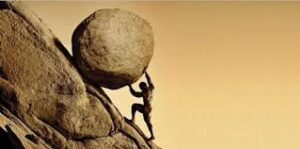
Tier 6 through Tier 10 will explore the strengths and weaknesses of countries ranked below 100. Countries ranked 101 to 120 results are below.
Tier 6: You can see most of these countries’ weaknesses stems from the social condition of adult illiteracy. The strengths are generated from a low–wage labor force. That demonstrates the lack of education is affecting both the economic and social growth of the population.
101. India– Strengths: Unemployment Rate; Weaknesses: Adult Illiteracy Levels, 102. Laos– Strengths: Unemployment Rate; Weaknesses: Adult Illiteracy Levels, 103. Uruguay– Strengths: Adult Illiteracy Levels; Weaknesses: Access to Internet, 104. Tunisia– Strengths: Access to Electricity; Weaknesses: Adult Illiteracy Levels, 105. Eswatini– Strengths: National Debt; Weaknesses: Unemployment Rate, 106. Ghana– Strengths: Work Force Participation; Weaknesses: Adult Illiteracy Levels, 107. Thailand– Strengths: Unemployment Rate; Weaknesses: Access to Internet, 108. Moldova– Strengths: Adult Illiteracy Levels; Weaknesses: Poverty Level, 109. Burma (Myanmar)– Strengths: Work Force Participation; Weaknesses: Adult Illiteracy Levels,110. North Korea– Strengths: NI; Weaknesses: NI, 111. Venezuela– Strengths: National Debt; Weaknesses: Crime Rate, 112. El Salvador– Strengths: Access to Electricity; Weaknesses: Crime Rate, 113. Morocco– Strengths: Crime Rate; Weaknesses: Adult Illiteracy Levels, 114. South Africa– Strengths: Access to Electricity; Weaknesses: Crime Rate, 115. Jamaica– Strengths: Access to Electricity; Weaknesses: National Debt, 116. Panama– Strengths: Unemployment Rate; Weaknesses: Poverty Level, 117. Solomon Islands– Strengths: NI; Weaknesses: NI, 118. Cape Verde– Strengths: Access to Electricity; Weaknesses: National Debt, 119. Sao Tome and Principe– Strengths: NI; Weaknesses: Adult Illiteracy Levels, 120. Cambodia– Strengths: Work Force Participation; Weaknesses: Adult Illiteracy Levels
Tier 7: Ranks countries 121 to 140, shows the strengths of these countries are in workforce development, but, again offering low wage-paying jobs. The next strengths indicator is a low National Debt, which signifies these nations have poor trade agreements.
It may be because most of these countries’ weaknesses are in adult literacy, which points to lower-skilled jobs and early entry into the workforce. Again demonstrating the lack of a high quality education system drags down a society.
121. Togo– Strengths: Work Force Participation; Weaknesses: Adult Illiteracy Levels, 122. Bangladesh– Strengths: National Debt; Weaknesses: Adult Illiteracy Levels, 123. Papua New Guinea– Strengths: Unemployment Rate; Weaknesses: Adult Illiteracy Levels, 124. Tuvalu– Strengths: NI; Weaknesses: NI, 125. Sierra Leone– Strengths: Crime Rate; Weaknesses: Adult Illiteracy Levels, 126. Guatemala– Strengths: National Debt; Weaknesses: Poverty Level, 127. Jordan– Strengths: Crime Rate; Weaknesses: National Debt, 128. Suriname– Strengths: Access to Electricity; Weaknesses: Unemployment Rate, 129. Lesotho– Strengths: NI; Weaknesses: Poverty Level, 130.Benin– Strengths: Work Force Participation; Weaknesses: Adult Illiteracy Levels, 131. Yemen– Strengths: NI; Weaknesses: Poverty Level, 132. Honduras– Strengths: Work Force Participation; Weaknesses: Crime Rate, 133. Rwanda– Strengths: Work Force Participation; Weaknesses: Poverty Level, 134. Bulgaria– Strengths: Adult Illiteracy Levels; Weaknesses: Poverty Level, 135. Cote d’Ivoire– Strengths: National Debt; Weaknesses: Adult Illiteracy Levels, 136. Pakistan– Strengths: Work Force Participation; Weaknesses: Adult Illiteracy Levels, 137. Djibouti– Strengths: NI; Weaknesses: Unemployment Rate, 138. Sudan– Strengths: Crime Rate; Weaknesses: Adult Illiteracy Levels, 139, Mauritania– Strengths: NI; Weaknesses: Adult Illiteracy Levels, 140. Barbados– Strengths: Adult Illiteracy Levels; Weaknesses: Poverty Level
Tier 8: Ranks countries 141 to 160, the curse of illiteracy shows up again; where most of these countries have a high rate of adults that have a hard time reading, writing, or counting.
Without those life-skills, it is impossible to sustain a healthier way to live or grow a family. Nevertheless, if a heart beats people will try to survive so they go to work. They live day, by day, which insuring these countries will have a vibrant and ready-to- go workforce as their strengths.
141. Cameroon– Strengths: Work Force Participation; Weaknesses: Child Mortality Rate, 142. Eritrea – Strengths: Work Force Participation; Weaknesses: Adult Illiteracy Levels, 143. Burkina Faso– Strengths: National Debt; Weaknesses: Adult Illiteracy Levels, 144. Cuba– Strengths: National Debt; Weaknesses: NI, 145. Brazil– Strengths: Access to Electricity; Weaknesses: National Debt, 146. Afghanistan– Strengths: Work Force Participation; Weaknesses: Adult Illiteracy Levels, 147. Niger– Strengths: Work Force Participation; Weaknesses: Adult Illiteracy Levels, 148. Madagascar– Strengths: Work Force Participation; Weaknesses: Access to Electricity, 149. Tanzania– Strengths: Work Force Participation; Weaknesses: Poverty Level, 150. Liberia– Strengths: National Debt; Weaknesses: Adult Illiteracy Levels, 151. Burundi– Strengths: Work Force Participation; Weaknesses: Poverty Level,152. Comoros– Strengths: National Debt; Weaknesses: Unemployment Rate, 153. Marshall Islands– Strengths: NI; Weaknesses: NI, 154. Senegal– Strengths: NI; Weaknesses: Adult Illiteracy Levels, 155. Mali– Strengths: Work Force Participation; Weaknesses: Adult Illiteracy Levels, 156. Uganda– Strengths: Work Force Participation; Weaknesses: Adult Illiteracy Levels, 157. Bahamas– Strengths: Access to Electricity; Weaknesses: National Debt, 158. Gambia– Strengths: NI; Weaknesses: Adult Illiteracy Levels, 159. Mozambique– Strengths: NI; Weaknesses: National Debt, 160. Chad– Strengths: Work Force Participation; Weaknesses: Adult Illiteracy Levels
Tier 9: Ranks countries 161 to 180, is a group of nations that shows an imbalance of government leadership.
Most of these countries’ strengths are their natural wealth. Their weaknesses are their abilities to reach their whole country. Maybe, it’s greed that separates them from trusting one another or poor communication skills due to a lack of educational development.
161. Central African Republic – Strengths: Work Force Participation; Weaknesses: Adult Illiteracy Levels, 162. Guinea,- Strengths: Work Force Participation; Weaknesses: Adult Illiteracy Levels, 163. Cyprus– Strengths: Adult Illiteracy Levels; Weaknesses: National Debt, 164. United Arab Emirates– Strengths: Work Force Participation; Weaknesses: Adult Illiteracy Levels, 165. Aruba (Neth.)– Strengths: NI; Weaknesses: NI, 166. Ukraine– Strengths: Adult Illiteracy Levels; Weaknesses: Nation Debt, 167. Republic of Macedonia– Strengths: National Debt; Weaknesses: Unemployment Rate, 168. Niue (NZ)– Strengths: NI; Weaknesses: NI, 169. Turkmenistan– Strengths: Adult Illiteracy Levels; Weaknesses: Child Mortality Rate, 170. Trinidad and Tobago– Strengths: Adult Illiteracy Levels; Weaknesses: Crime Rate, 171. Guyana – Strengths: Access to Clean Water; Weaknesses: Unemployment Rate,172. Puerto Rico (US)– Strengths: Nation Average Age 40; Weaknesses: Work Force Participation, 173. Palau– Strengths: Access to Clean Water; Weaknesses: Child Mortality Rate, 174. Lebanon– Strengths: Crime Rate; Weaknesses: National Debt, 175. Bosnia and Herzegovina– Strengths: Adult Illiteracy Levels; Weaknesses: Unemployment Rate,176. Malawi– Strengths: Work Force Participation; Weaknesses: Adult Illiteracy Levels, 177. Namibia– Strengths: National Debt; Weaknesses: Unemployment Rate, 178. Vanuatu– Strengths: Crime Rate; Weaknesses: Adult Illiteracy Levels, 179. Ethiopia– Strengths: Work Force Participation; Weaknesses: Adult Illiteracy Levels, 180. Paraguay– Strengths: Work Force Participation; Weaknesses: Poverty Level
Tier 10: Ranks countries 181 to 203 unlike the countries in tier 9, half of these countries children grow up in war-torn nations. An explosion is a culture; going to school is a James Bond movie. So why send my child to school?
Poverty levels, high child mortality rates, and unclean living conditions separate these countries from the rest of the world. Went will the rest of the world care?
181. Palestine– Strengths: Adult Illiteracy Levels; Weaknesses: Nation Average Age 20, 182. Tonga– Strengths: NI; Weaknesses: NI, 183. Bermuda (UK)– Strengths: Child Mortality Rate; Weaknesses: Poverty Level, 184. Republic of the Congo– Strengths: Work Force Participation; Weaknesses: Adult Illiteracy Levels, 185. Botswana– Strengths: Work Force Participation; Weaknesses: Adult Illiteracy Levels, 186. Equatorial Guinea– Strengths: National Debt; Weaknesses: Child Mortality Rate, Libya– Strengths: National Debt; Weaknesses: Adult Illiteracy Levels, 188. Iraq– Strengths: Access to Electricity; Weaknesses: Adult Illiteracy Levels, 189. Nicaragua– Strengths: Work Force Participation; Weaknesses: Poverty Level,190. Federated States of Micronesia– Strengths: NI; Weaknesses: NI, Nigeria– Strengths: National Debt; Weaknesses: Adult Illiteracy Level, Zimbabwe– Strengths: Work Force Participation; Weaknesses: Access to Electricity,193. Haiti– Strengths: Work Force Participation; Weaknesses: Adult Illiteracy Levels, 194. Gabon– Strengths: Access to Electricity; Weaknesses: Poverty Level, 195. Guinea-Bissau– Strengths: Work Force Participation; Weaknesses: Poverty Level, 196. Angola– Strengths: Work Force Participation; Weaknesses: Nation Average Age 16, 197. Syria– Strengths: Access to Electricity; Weaknesses: Poverty Level, 198. Zambia– Strengths: Work Force Participation; Weaknesses: Adult Illiteracy Levels, 199. Kosovo– Strengths: National Debt; Weaknesses: Work Force Participation, 200. Democratic Republic of the Congo– Strengths: Work Force Participation; Weaknesses: National Debt, 201. Andorra– Strengths: NI; Weaknesses: NI, South Sudan– Strengths: NI; Weaknesses: Adult Illiteracy Levels, 203. Somalia– Strengths: NI; Weaknesses: Child Mortality Rate
2020 is gone. It left a mark on history. Where do we go from here? What countries will survive and thrive? The right answer is those who can educate their next generation and those who cannot.
Help us Change the World. A Smarter World…A Greater World: the World Top 20 Project
Learn How Here
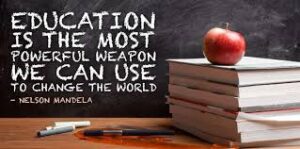


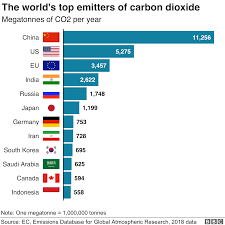
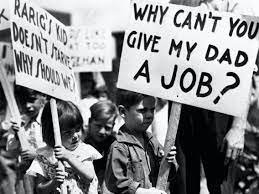

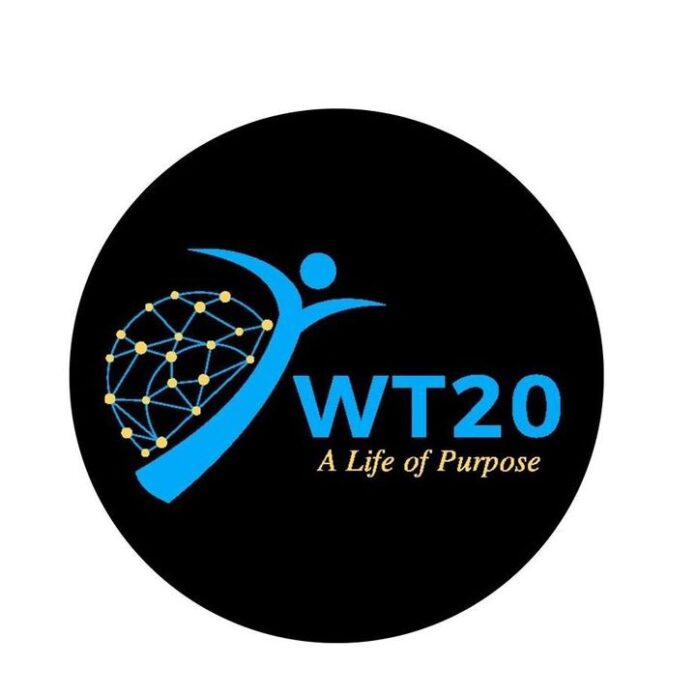
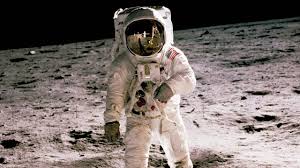 For centuries things continue to change, evolve into something new. To the point, the man wanted to walk on the moon. With all that, the need to evolve, man could do nothing if he or she could not communicate with one another.
For centuries things continue to change, evolve into something new. To the point, the man wanted to walk on the moon. With all that, the need to evolve, man could do nothing if he or she could not communicate with one another. It’s difficult to attract an audience for something you can’t see, hear, or attend. It would be perfect if we could get just one person, rather than an entire country, excited or interested. It’ll take a lot of persuasion. That is why we need everyone to stand behind the flag.
It’s difficult to attract an audience for something you can’t see, hear, or attend. It would be perfect if we could get just one person, rather than an entire country, excited or interested. It’ll take a lot of persuasion. That is why we need everyone to stand behind the flag.

